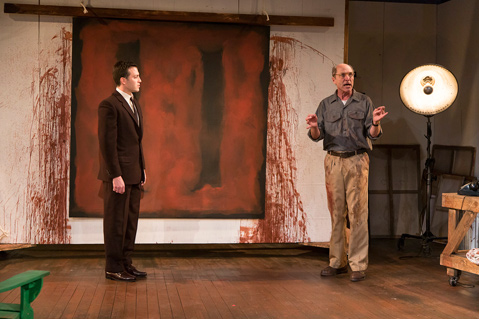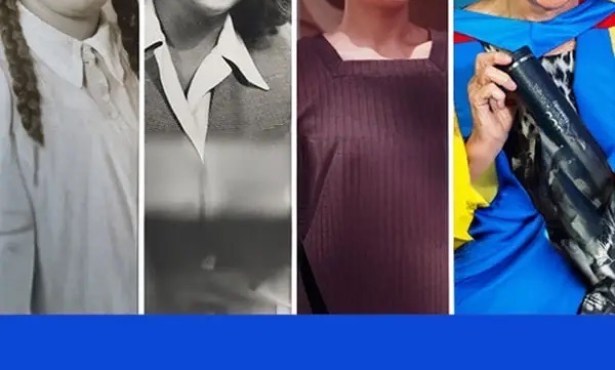Review: Red at the New Vic
Ensemble Theatre Looks Inside Mark Rothko’s Studio

In this Tony Award–winning two-person play, the notoriously intense American painter Mark Rothko (Matt Gottlieb) puts his young studio assistant Ken (Shaun Anthony) through a series of more or less painful emotional trials. At the outset, Rothko defines the young man’s role as strictly subservient and instrumental — as in “assistants should be seen and not heard” — but over the course of the show’s 90-minute single act, the artist continually draws Ken back into a series of far-flung discussions about the history of art and its relations to psychology, philosophy, and tragedy. While on the surface this premise sounds simple and even didactic, Red is anything but boring. Like Rothko’s signature paintings depicting blurry rectangles of color stacked vertically against a contrasting background, the show invites the viewer to contemplate the pulsing vitality that arises when strong figures collide.
Set in designer Brian Sidney Bembridge’s striking rendering of Rothko’s Bowery studio circa 1958-59, Red portrays a key moment in the painter’s biography. Having established himself as one of the world’s most important artists, Rothko accepts a commission from the architect Philip Johnson to provide a set of murals to decorate the walls of the Four Seasons, a power mecca restaurant situated within the new Seagram building just east of Rockefeller Center in Manhattan. Rothko knows how important this commission is to his reputation, but he’s not sure whether his most powerful move in relation to it will be to fulfill it or to deny it. After wrestling with the project for a period of several months, the artist finally rejects the commission and returns the money. The Seagram project thus became a particularly crucial episode in the making of Rothko’s self-mythology.
For Ken, the job of filling Rothko’s paint cans and cleaning his brushes is at once a dream and a nightmare. A painter himself, the young man sees in Rothko a father figure of immense power and deep flaws. The tension in their relationship builds to a series of climaxes, some lyrical, such as the moment when the two prime a canvas together, and some violent, as when Ken confronts his mentor about his own ambitions. Brian Shnipper’s acute direction brings out all the nuances in John Logan’s terrific script, and Gottlieb has a fine time surfing the great man’s towering, then crashing, waves of ego and insight.
The studio teems with opportunities for the actors to perform small tasks — there’s a sink, plenty of paint and brushes, and even a staple gun for fastening canvas to stretchers. But it’s through the less obvious but still palpable task of looking that these actors draw the audience in to their seething cauldron of artistic creation. I can’t think of another play that goes further toward dramatizing the essential act of focusing one’s visual attention. When it works, and it frequently does, Red succeeds in hanging something on the fourth wall that separates and unites the audience with the actors on the stage. And although that work of art is meant to be a Rothko painting, replete with the pulsing energy of tragedy with which the artist invested his every brush stroke, the excitement of Red lies in the feeling that we see through what that paint has covered up.



